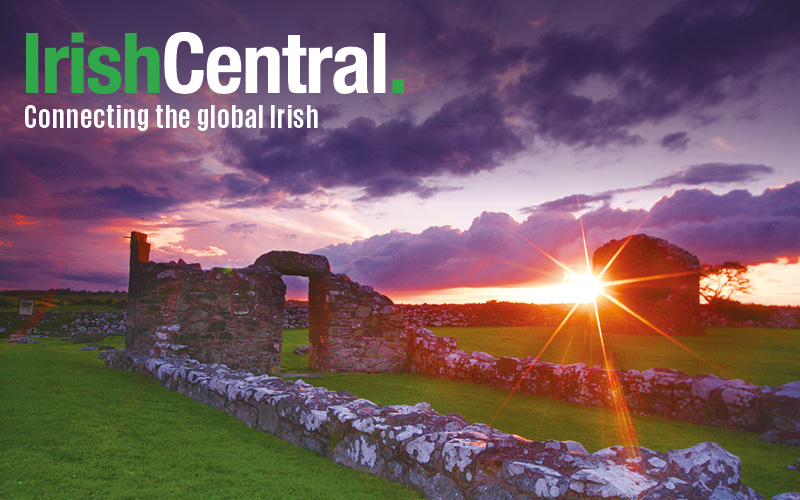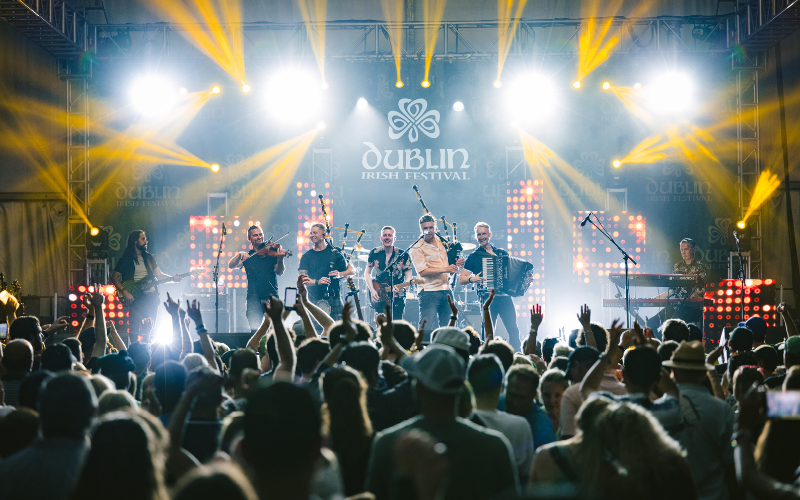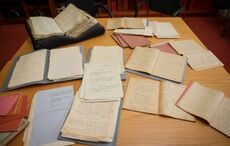On October 14, 1920, Tipperary rebel-on-the-run Seán Treacy was shot dead in a blazing gun battle in Dublin’s busy Talbot Street, only a short walk from the GPO in O’Connell Street.
It was an event that was to mark the five-week march to Bloody Sunday, November 21, 1920, when agents of Michael Collins’ Squad—the famed Twelve Apostles—shot dead 14 British Service agents in one morning. After 700 years of occupation by the British, this breathtakingly notorious and audacious act resulted, one-year and 16 days later, in the creation of the Irish nation.
Read more: Michael Collins and the Bloody Sunday massacre, 95 years on today
A timeline of British terror
The five-week period would be marked by several key events that still remain a legend in the history of Ireland:
- October 11, 1920, the shooting of Treacy’s fellow Tipperary rebel Dan Breen and the extraordinary events that led to his survival. Between Breen and Treacy, the two of them would kill 13 British soldiers as they escaped their not-so-safe safe-house.
- October 14, 1920, Treacy dies in Talbot Street.
- October 25, 1920, the Lord Mayor of Cork, Terence MacSwiney, after a 74-day fast, starves himself to death in Brixton Prison in England.
- November 1, 1920, IRA volunteer Kevin Barry is hanged at Mountjoy Prison in Dublin. The clueless British forget that this day is All Saints Day, a holy day of obligation, making Barry an instant martyr.
- November 20, 1920, Dick McKee and Peadar Clancy, the Brigadier and vice-brigadier of the Dublin brigades, are captured by the British with the help of their tout, Shankers Ryan. After the events of Bloody Sunday, they would be beaten to death, along with innocent Gaelic Leaguer Conor Clune, inside the walls of Dublin Castle. Despite the personal danger, Michael Collins would dress the bodies in their IRA uniforms and attend their funeral at the Pro-Cathedral. On February 5, 1921, Shankers Ryan would be shot dead by the Squad as he had an eye-opener at Hynes Pub in Lower Gloucester (now Seán MacDiarmada) Street. It was the last act for Bloody Sunday.
- Bloody Sunday, November 21, 1920, the Squad, buttressed by men from the Dublin Brigade—including future Taoiseach Seán Lemass—render the ultimate revenge on the British Secret Service.
 2
2
Eamon de Valera and Michael Collins.

Eamon de Valera and Michael Collins.
Seán Treacy and Dan Breen start the War of Independence
The first Dáil Éireann convened in the Mansion House in Dublin on January 21, 1919. Twenty-five Teachtaí Dála, Deputies to the Dáil, or TDs, were sworn in. Michael Collins, although absent, was listed as “i láthair” or “present.” Forty-three, including Eamon de Valera, were not as lucky. In their absence, they were described as being “fé ghlas ag Gallaibh,” or “imprisoned by the foreign enemy.”
Collins wasn’t there because he was in England preparing to break de Valera out of Lincoln Gaol. But the real action that day was occurring in a quarry in Soloheadbeg, County Tipperary. There, Volunteers Seán Treacy, Séamus Robinson, Seán Hogan and Dan Breen had hijacked a cart containing a hundredweight of gelignite and in the process shot two RIC policemen dead, jump-starting the War of Independence. The four rebels soon had a price on their heads and headed for Dublin and the anonymity of the relatively big city.
Read more: Why Douglas Hyde, not the "Lord Mayor of Ireland," became Ireland's first President
Michael Collins welcomed them with open arms and they soon were supplementing his Squad on a regular basis. One of the big jobs they went out on was in December 1919 when Collins, for the umpteen time, tried to assassinate the Lord Lieutenant of Ireland, Lord French. Eleven men—including the Tipperary foursome, Treacy, Robinson, Hogan and Breen—descended on Ashtown to try and gun down French. A fierce gun battle took place with French miraculously escaping. One volunteer, Martin Savage, was killed and Breen was wounded in the leg. Like a cat with nine lives, Breen would also survive this assault.
Breen and Treacy shoot their way to freedom
On the night of October 11, 1920, Breen and Treacy were staying at a safe-house in Drumcondra. They were sharing the bed. Breen had a premonition that something bad was about to happen. He told Treacy who responded, “Somehow, Dan, I wouldn’t mind at this stage if we were killed, the war will continue whatever happens. If we’re to be killed, I hope that we will die together.”
Soon after, the British attacked the house. Treacy turned to Breen and said, “Good-bye, Dan, until we meet above.” In the gun battle that followed, Breen was hit an amazing seven times, including taking one shot to his lung.
During the gun battle, Treacy escaped through the bedroom window. Breen didn’t know if his friend was alive or dead. Breen shot his way out and tried to escape the neighborhood. He made it over walls and through the Tolka River and picked out a house at random for help. When he knocked on the door, the man said, “I do not approve of gunmen, I shall call the military.” Breen heard a woman’s voice, “If you do, I’ll report you to Michael Collins!”
They soon got word to brigadier Dick McKee and Breen was secretly moved to the Mater Misericordiae Hospital on Eccles Street. The hospital was surrounded several times by the British and Treacy made plans to rescue Breen if he had to. He was doing exactly that at the Republican Outfitters at 94 Talbot Street when tragedy struck, and Treacy was killed.
Breen had another of his premonitions. Because of his delicate condition, they did not tell him his great friend had been slain. Breen in his gripping and terrifying autobiography, "My Fight for Irish Freedom," wrote: “I saw him [Treacy] standing at the foot of my bed with a radiant smile on his countenance. Towards nightfall, Mick Collins came to see me. ‘Where is Seán?’ I asked. Mick averted his eyes and replied, ‘He’s out in the country.’ Ten days passed before I learned the full story.”
Unlike his friend, Dan Breen lived a full life and served as a TD in the Dáil. He died in 1969 at the age of 75.
So, it was the unbelievable courage of men like Treacy and Breen, who laid their lives on the line, that led to the most important day in Irish history—Bloody Sunday, November 21, 1920.
Dermot McEvoy is the author of "The 13th Apostle: A Novel of Michael Collins and the Irish Uprising" and "Our Lady of Greenwich Village," both now available in paperback, Kindle and Audio from Skyhorse Publishing. He may be reached at [email protected]. Follow him at www.dermotmcevoy.com. Follow The 13th Apostle on Facebook at https://www.facebook.com/13thApostleMcEvoy/




Comments